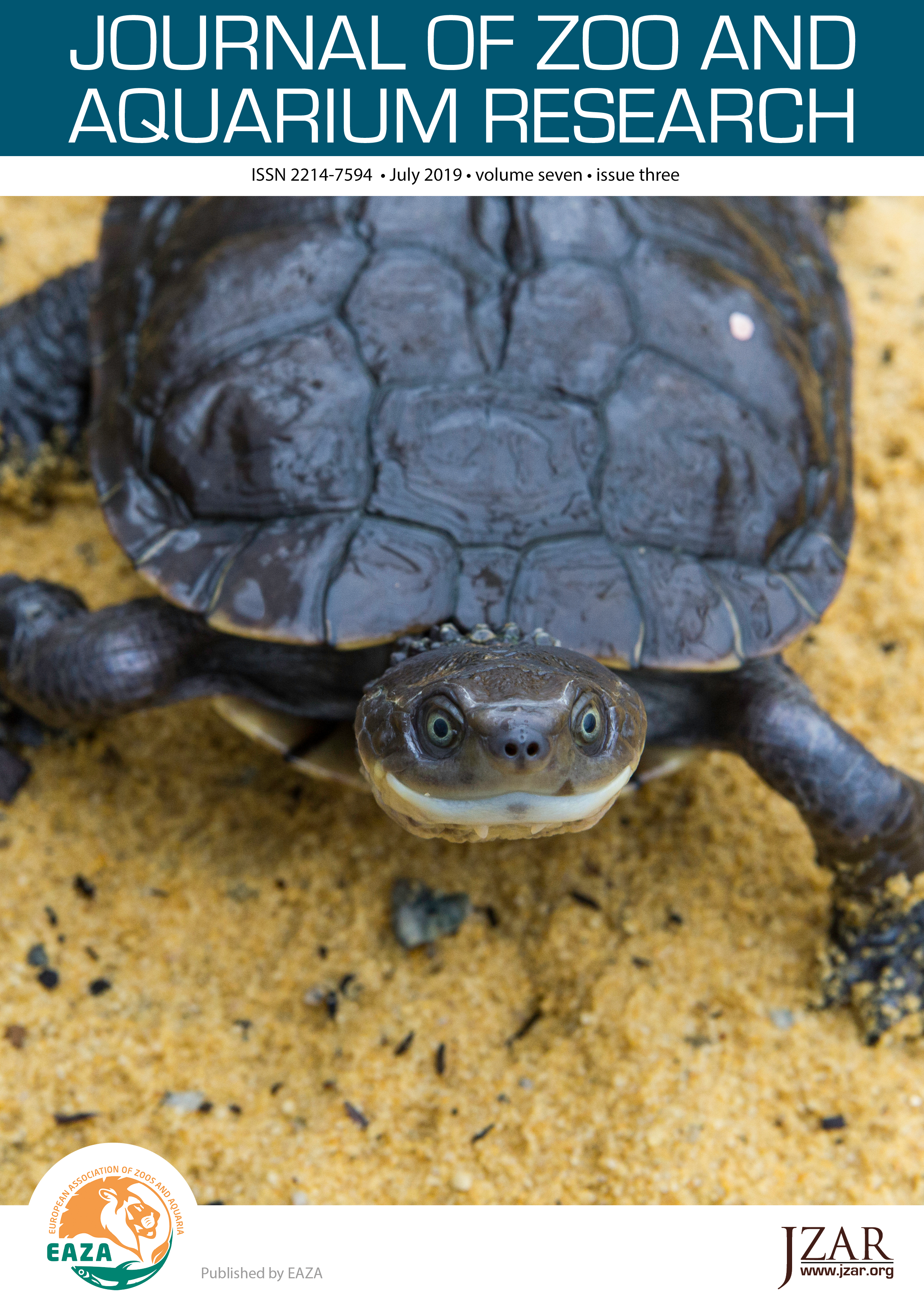The utility of dried blood spots for the assessment of avian vitamin D3 status compared with plasma analysis
DOI:
https://doi.org/10.19227/jzar.v7i3.383Keywords:
corncrake, vitamin D3, bird, dry blood spot, tandem mass spectrometryAbstract
There is a high incidence of metabolic bone disease (MBD) in many vertebrate species kept in captivity. Methods to prevent this disease include diet review and reformulation to balance the calcium, phosphorous and vitamin D3 as well as ultraviolet-B (UVB) provision to stimulate endogenous production of vitamin D3. To assess the success of these interventions in raising vitamin D3 status in the blood, the most commonly used method is analysing a relatively large volume of liquid serum for vitamin D3 (serum analysis). Dried blood spots (DBS) have been used widely in human samples to assess vitamin D3. The small blood volume needed and potential for syringe free sampling in field situations made this an attractive method for use in small taxa or in remote locations. However, DBS as sampling method for vitamin D3 analysis has not been validated in non-human species and so its utility is unknown; nevertheless a small but growing literature providing reference values and husbandry recommendations relies on this unvalidated method. We assessed the vitamin D3 status of adult corncrakes (Crex crex) forming part of the conservation breeding population for this species in Britain using both DBS and ‘gold standard’ serum/plasma analysis. The serum/plasma analysis provided a reference range (mean ± standard deviation (range): 19.7 ± 6.5 (7.9-30.9)nmol/L) for plasma vitamin D3 in corncrakes, which we compare with ranges known for other avian taxa. We used the results to assess the utility of DBS analysis as a diagnostic tool. We found that although the two datasets were highly correlated, analysis of the residuals showed significant systematic and random bias. These data suggest that with the current analytical methods the DBS method is not good enough at predicting plasma vitamin D3 and thus not yet a useful diagnostic tool for corncrakes. Therefore, DBS results for vitamin D3 from non-human blood samples should be treated with caution until validation in a range of taxa can be undertaken.
Downloads
Published
How to Cite
Issue
Section
License
JZAR fulfils the DOAJ definition of open access and provides free and open access to the full text of all content without delay under a Creative Commons licence. The copyright holder of JZAR publications grants usage rights to third parties, allowing for immediate free access to the work and permitting any user to read, download, copy, distribute, print, search, or link to the full texts of articles.







